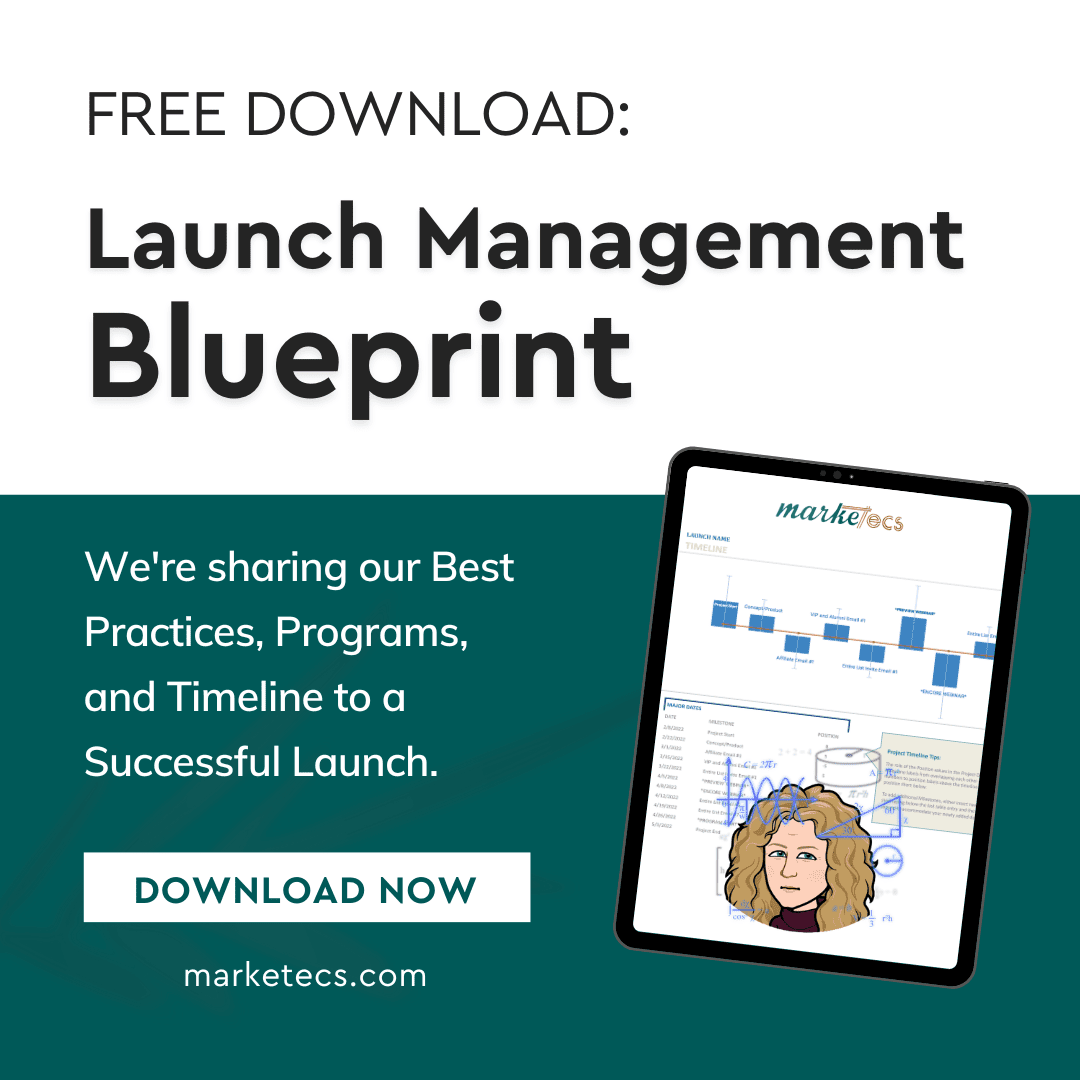Highlights of this article:
- 3 factors to choose your platform
- Define your budget
- How to create an advertising plan
- 7 parts of an advertising campaign
- Ad monitoring & optimization
- The big 3 advertising platforms for coaches and consultants
Have you ever thought about paid advertising? Before you invest your hard-earned money, it’s important to choose the right platform to advertise on, so you can maximize your return on investment.
Start by considering 3 key factors:
- your audience
- your budget
- the type of content you’re promoting
To Advertise Effectively, Know Your Audience
When you first started your business, you likely decided which social media platform(s) would be best to focus on. You had an understanding of your audience – and where they were most likely to spend their time.
Likewise, you want to do the same when you’re selecting an advertising platform. While there are several resources that can help you identify the best platforms based on age, gender, location, and interests, there is something else to consider: your own intuition!
What do you know about your ideal client? This knowledge will help you develop your ad copy and images…think of what your ideal client responds to and what type of ‘head space’ they are in when using each platform.
For example, your ideal client might spend a lot of time on LinkedIn for work, and kick back on YouTube while at home. Think about which version of them you are trying to appeal to, and then when and where would be the most effective way to reach them.
The Right Content at the Right Time
Next, consider your content type. Think about the example above again, where your ideal client might spend a lot of time on LinkedIn for work, and on YouTube at home. It’s all about that old mantra “The right place at the right time…”
If you’re promoting a kid’s summer camp to parents, an ad on LinkedIn might not be the most effective, because they are in work mode. But an ad on YouTube or Facebook might catch them when they’re at home and ready to make that kind of a decision.
Also, ask if your ad is something that people are actually searching on Google for? If so, you could benefit from a paid search ad.
What’s Your Ad Budget?
Once you have an idea of where your ideal audience is spending time – and where your content fits best – it’s time to consider budget. Different advertising platforms have different minimum budgets, as well as different recommended budgets.
For example, Google is just a $0.01 per day, but at that rate you may never get any clicks. Facebook’s minimum budget is $1/day. LinkedIn is $10/day.
So, you might find that while LinkedIn is your best audience, Facebook is a close 2nd – and it’s more budget friendly.
Entire articles focus solely on ad budgets, and for good reason. Your budget will be unique to your goals and where you’re at in your business. For the lowdown on figuring out budgets (with minimum spend requirements for every major platform), check out this link.
How to Create an Advertising Plan 
Have you ever thought how easy it would be to just advertise “cold turkey” – pointing someone to a paid product or program? Think twice about that strategy. We rarely recommend it.
One of the advantages to paid advertising is the opportunity to build audiences, which can take time and preparation. So, we often run ads to key content blogs, to build website traffic.
Then, we’ll build on that traffic to re-target people using simple lead magnets, and build lists of people with similar demographics. We can utilize those lists and data to promote paid products and programs, alongside email campaigns and content marketing.
Pro Marketing Hint: Before you start running ads, it’s important to ensure the platform you’re using is set-up properly to collect and track the data you’re hoping to gain.
7 Parts of an Advertising Campaign
- Platform – choose and set-up your platform, including integrations with your website.
- Audience – create audiences based on demographics, engagement, and uploading lists.
- Copy – craft your messaging, keeping your target audience in mind.
- Images – this is super important, because your images are often the biggest driver (providing your audience is correct).
- Link destination – you need a place to send your ad traffic! It makes sense to send it somewhere you can track and monitor, such as your own website.
- Budget – How much can you afford to spend per day, every month, or over the life of the promotional period? Planning is key.
- Goal – What metrics are you tracking: link clicks, event registrations, purchases, phone calls, or something else?
Ad Monitoring and Optimization
Wouldn’t it be great if ads were a once-and-done process? Unfortunately, even after you’ve got your paid ads running, your work isn’t done. You should monitor and adjust your ads over time for best results.
If you’re running short-term ads (i.e. less than 1 month), you may just be monitoring for best practices and planning your next campaign. However, if you’re running evergreen ads or ad campaigns that go on for months, you have opportunities to make adjustments that should improve your outcomes and ROI.
5 Ad metrics to monitor:
- Reach – how many have you reached with your ad
- Clicks – how many have clicked on your link
- Cost per click – how much has each link click cost you
- Results – how many goals have you achieved
- Cost per result – how much have you paid for each result
Turn Ad Analytics into ACTION
Based on your ad plan and goals, there may be additional data to monitor.
For a deeper dive, check out our helpful article: Marketing Data & Analytics Collection: What to Measure.
From these numbers, you can analyze which audience has the best ROI or which image gets the most clicks, and then reallocate your budget or change your audience to improve your results.
For example, you may find that a particular image is 50% more effective at gaining training registration results; therefore, Facebook or Google is utilizing that image more often in your ads. However, upon further inspection, you discover that image is twice as expensive per registration result. In that case, it could make sense to eliminate that image and see if the others perform better at lower costs… i.e. higher ROI.
You may be wondering what platforms most coaches and consultants choose to advertise on. The quick answer is the Big 3:
Stay tuned for our next article, where we’ll give you a rundown of the benefits (& drawbacks) to these popular platforms.
Paid advertising certainly has a lot of “moving pieces,” doesn’t it? It requires a certain level of expertise (and analysis) to work effectively.
If the thought of starting paid ads feels daunting – or you’ve tried in the past with disappointing results – let’s talk! Our marketing architects provide a realm of support, from answering basic questions to setting up and testing complex ad campaigns. Click here to set up a time to chat.


